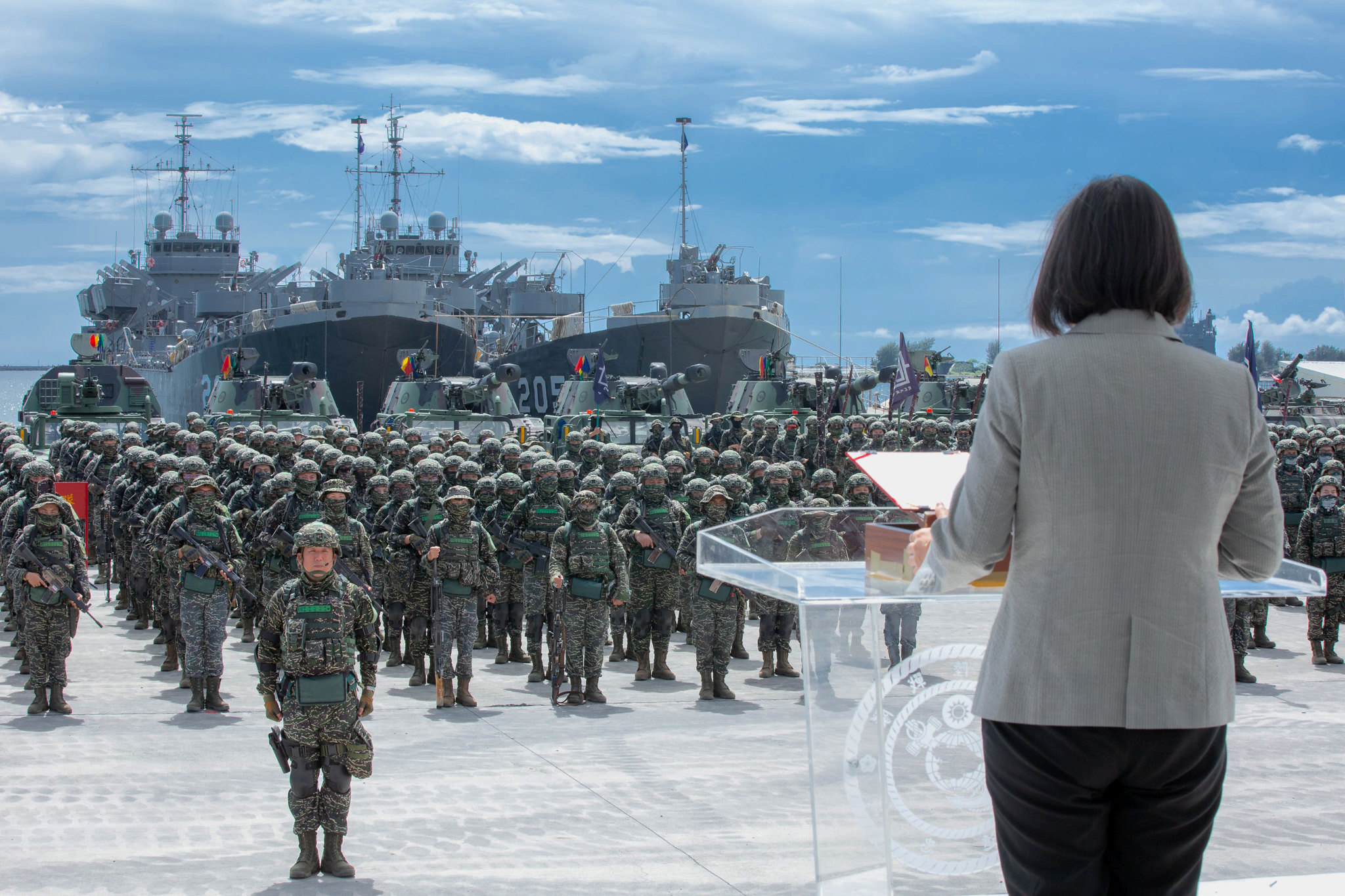
When it comes to Taiwan, the United States’ goal is to ensure Beijing understands an invasion is “never easy to do rapidly or cost-free,” the senior Pentagon official for the Indo-Pacific said Thursday.
Ely Ratner, speaking at the American Enterprise Institute, added, “what we are trying to do [is] ensure when Beijing looks at the problem, [it decides] today is not the day.”
It would be “a really bad idea” for Beijing to pursue 2027 as the year for military action to bring the self-governing island under its control, he said.
Michael Chase, deputy assistant secretary for China at the Pentagon, said the United States is committed to maintaining an “asymmetric advantage” in cyber, space, and electronic warfare when it comes to China.
Taiwan needs to beef up its asymmetric defenses, he said.
When Ratner was asked about China’s stepped-up military demonstrations of power in the Taiwan Strait following House Speaker Nancy Pelosi’s (D-Calif.) visit to the island this summer, he said these actions were “very much consistent” with past behavior.
What is new “was the degree of coercion and assertiveness” that China showed, he said. In response to the Speaker’s visit, China fired missiles over the island and into the Japanese Exclusive Economic Zone, crossed the median “line of control” in the strait with scores of bombers and fighters, sent warships around the island as if they were blockading and conducted extensive live-fire military exercises simulating an invasion.
But China was alone in flexing military capabilities over Taiwan’s future, a panel of security experts agreed at a Thursday Center for Strategic and International Studies event.
Despite February’s proclamation by Chinese President Xi Jinping and Russian President Vladimir Putin that the two nations had reached a “no limits” strategic cooperation agreement, Moscow did not participate in these actions or exercises.
This was in contrast to their joint aerial patrols in May when the Quad, the informal security and economic relationship among the United States, Japan, Australia and India, met in Tokyo. Brian Hart of CSIS’ China Power Project said the two use “these exercises for political bargaining points.” He added “the role of these exercises is deterring the U.S. and allies” by publicly showing strategic capability in 2022.
Hart and Meia Nouwens, senior fellow at the International Institute for Strategic Studies in London, said the Sino-Russian agreement is very different from America’s formal treaty alliances that make specific commitments to security and defense if attacked.
Other limits of the agreement show up in “the clear lack of trust” between Moscow and Beijing, Hart said. Nouwens said that distrust started with Chinese espionage on the Kremlin’s defense industry and reverse-engineering equipment it bought from Moscow to manufacture on its own without paying for the technology.
At AEI, Ratner said China is using its increased military capability in conventional and strategic forces to pursue a policy of “growing assertiveness” in the region and now globally “in projecting and sustaining power.”
“We’re going to continue to fly, sail and operate” in the Indo-Pacific “consistent with international law,” Ratner said.
China, on the other hand, has been “very reluctant to talk about crisis reduction” with the United States, Chase said. Ratner added that the United States “has an outstretched hand” to communicate more frequently and openly with China on security issues, but “the PLA is not serious about this.”
As China looks for new overseas bases through its ports’ infrastructure agreements in Africa, the Middle East and South Asia, the United States is looking at ways to disperse its forces from its heavy concentration in North Asia and maintain forward presence across the Indo-Pacific, Ratner said.
He said this “takes a lot of work and years of diplomacy” with nations like the Philippines and Australia over new basing agreements to better deter China’s ambitions. For Australia, it also means partnering with the United States and United Kingdom on developing a nuclear-power submarine force. Ratner said he expected an announcement on the submarine program in March.
At the CSIS event, Nouwens said there is a growing imbalance between an increasingly economically and militarily capable China and a Russia struggling in Ukraine and suffering under sanctionsthat affect its defense industrial base.
The two countries are “on an equal footing” in producing weapons and systems for their own use and sales overseas, she added. Foreign arms sales were important for the Russian economy even before the war in Ukraine. Moscow is in the market for sophisticated Iranian drones and North Korean rockets and artillery shells, according to news reports.
While joint exercises have grown over the years from land-based to include naval and air patrols, Hart said the demands that Ukraine is putting on Russian forces has caused them to scale down in the past year. He expects the two to continue joint training, but China will now play a leading role in selecting sites and scenarios. Nouwens said both see value in “sharing how [their] military operates.”





